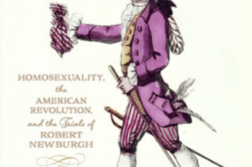STROLLING AT NIGHT along Berlin’s famous promenade, Unter den Linden, in the fall of 1921, the American expatriate writer Robert McAlmon couldn’t be certain that the passers-by dressed as women were really women. Having spent most of 1920 in Greenwich Village and just arriving from a spring and summer in Paris, he was no innocent rube abroad, shocked by what he saw. Indeed, he was himself bisexual and decidedly amoral about sexual behavior. Still, these weren’t the professionals he had known in Paris, but young men and women from respectable families. Berlin in the 1920’s had become one of the world’s great sin cities, where prostitution and cross-dressing were practiced openly and cocaine was sold on the streets. But why Berlin?
Decadence on this scale requires both great wealth and great poverty. The rich who have everything can have anything they want, while the poor have nothing of value to sell except their bodies—not for industry but for sex work—which they hire out to the rich for the gratification of whims. As McAlmon learned in short order, not only writers and artists but also exiled aristocrats, dissolute tourists, and speculators flocked to Berlin to exploit a destitute city whose desperate residents were doing what desperate people do to survive. Socially fragmented, politically chaotic, and economically bankrupt from the war and the harsh reparations demanded by the British and French, Germany was prostrate, defenseless against the vultures who came to pick its bones. In Berlin, there were periodic street fights and gun battles between factions of the Left and the Right.
What lured Americans to Europe at this time was “valuta,” or the extremely favorable rate of exchange. During the summer and fall of 1921, for example, the French franc was worth about seven American cents. So while American bohemians could rail against philistinism and puritanism—symbolized by Prohibition—while stuck in Greenwich Village, others found it much more pleasant to drink aperitifs at Le Dôme or suck down oysters at Pruniers for a pittance. But if Paris was a great bargain, Berlin was an absolute steal. Dropping in value steadily from the end of the war in 1918, the Reichsmark was worth only a third of a cent by November 1921 (per Federal Reserve Bulletin, Dec. 1921). In his memoir Being Geniuses Together (1938), McAlmon reported that the homosexual Expressionist painter Marsden Hartley, a friend from their Greenwich Village days, was living in regal style in Berlin after an auction of his paintings in New York netted him $5,000. At cabarets, boys and girls hovered around his table telling their sad stories. Touched and flattered by the attention, Hartley would pass out marks worth only a few American cents but enough to keep the youths going for another day. A more sinister effect of the depressed mark, as McAlmon noted, was that “A deck of ‘snow,’ enough cocaine for quite too much excitement, cost the equal of ten cents.” Thus, for a dollar or two, one could satisfy any taste in sex and drugs.





